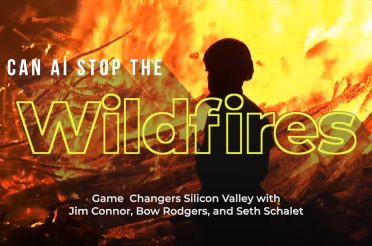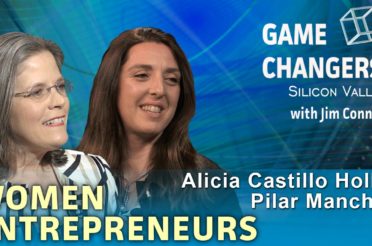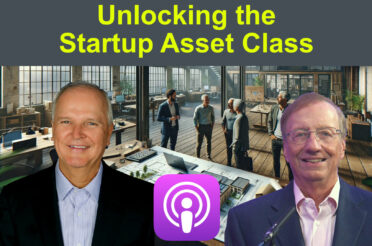Overview
Agtech, the Last Frontier
According to a United Nations study by the year 2050, the world’s population will reach nine point one billion which is 34 percent higher than today in order to feed this larger more urban and richer population. Food production must increase by 70 percent. So the question is given the limits of available farmland and water resources. How are we going to meet this increase in food demand?
Agtech Sector Perspective from Roger Royse, Founder Royse Law Firm:
Agtech is not just a movement it’s a revolution. We’ve had an industrial revolution we had an information revolution learn an agricultural revolution right now and as agriculture becomes a tech-enabled business and we’re seeing that come up in a lot of different areas robotics artificial intelligent controlled environment soil health as we were talking about earlier. So the thing that’s been driving all that. Are a couple of things in my world here in Silicon Valley. It’s really been the fact that the venture community woke up to this like I say about six or seven or maybe eight years ago and started investing heavily in this. And then there have been changes throughout the world really geopolitical changes that have been affecting this as well what’s going on in China affects what we do here in Silicon Valley that type of technology we produce and distribute around the world. So we’re seeing a lot of development and there’s a lot of factors it’s a perfect storm of factors have come together to make this a truly is a movement and really a very big area for new innovation.
On Vertical Farming, Sonia Lo, CEO of Crop One Holdings
Vertical farming is as the name implies a stacked shelving system generally within an enclosed space with artificial lighting but probably the simpler way to think about vertical farming is that it is the transfer of electrons to calories or the storage of electrons to calories because energy is the single largest input and what that really implies is that for the first time ever really agriculture can be segregated from climate and geography. And so anywhere you can generate an electron you can grow food.
In fact, vertical farms have existed for centuries if not millennia. And this type of vertical farming that’s very dense that can be again liberated from climate and geography is something that’s a relatively recent phenomenon in the last six to seven years. And that’s been enabled by the advent of cheap LCD lighting. And cheap sensors. And both of those things have allowed the unit economics of indoor growing food the unit economics of course of cannabis has always been quite attractive but the growing food has really been enabled by the cost decline and those two input technologies.
Transcript
According to a United Nations study by the year 2050, the world’s population will reach nine point one billion which is 34 percent higher than today in order to feed this larger more urban and richer population. Food production must increase by 70 percent. So the question is given the limits of available farmland and water resources. How are we going to meet this increase in food demand.
My name is Jim Connor. Welcome to game changers Silicon Valley. Tonight’s show is about Agtech. The abbreviated name for agriculture technology which represents the application of technology designed to improve their productivity the quality and the safety of food production at the same time while reducing costs. My guests are Sonia low CEO crop one a company focused on vertical farming and Roger Royce founder of the Royce law firm and organizer of the Royce Agtech Innovation Network. Sonia. Roger welcome to the show.
Jim: Roger you have been a leader in helping the ag tech sector gain visibility. Can you give us an overview of the tech movement and the areas that are showing the most promise?
Roger: Thanks, Jim. And it really is a movement. When we started our group seven or eight years ago it was really just another vertical for our existing technology companies to try to get into. But since then a lot has changed. The technology has really improved quite a lot and not only that the market has become much more receptive to adopting technology and that wasn’t true 10 years ago. So, in fact, I go beyond that. See it’s not just a movement it’s a revolution. We’ve had an industrial revolution we had an information revolution learn an agricultural revolution right now and as agriculture becomes a tech-enabled business and we’re seeing that come up in a lot of different areas robotics artificial intelligent controlled environment soil health as we were talking about earlier. So the thing that’s been driving all that. Are a couple of things in my world here in Silicon Valley. It’s really been the fact that the venture community woke up to this like I say about six or seven or maybe eight years ago and started investing heavily in this. And then there have been changes throughout the world really geopolitical changes that have been affecting this as well what’s going on in China affects what we do here in Silicon Valley that type of technology we produce and distribute around the world. So we’re seeing a lot of development and there’s a lot of factors it’s a perfect storm of factors have come together to make this a truly is a movement and really a very big area for new innovation.
Jim: Thank you. Sonia. Your company crop one has recently gained some recognition in the vertical farming area. So let’s start with I’ll ask you to give us an overview of what is vertical farming and how does it work and what’s different about it.
Sonia: So vertical farming is as the name implies a stacked shelving system generally within an enclosed space with artificial lighting but probably the simpler way to think about vertical farming is that it is the transfer of electrons to calories or the storage of electrons to calories because energy is the single largest input and what that really implies is that for the first time ever really agriculture can be segregated from climate and geography. And so anywhere you can generate an electron you can grow food.
Jim: That’s a pretty bold statement I have to say that but there are ideal places where land is relatively cheap or population density is very high. And as I understand it you are primarily a hydroponic technology is that correct are all vertical farming technologies hydroponic.
Sonia: No not at all. And in fact, vertical farms have existed for centuries if not millennia. And this type of vertical farming that’s very dense that can be again liberated from climate and geography is something that’s a relatively recent phenomenon in the last six to seven years. And that’s been enabled by the advent of cheap LCD lighting. And cheap sensors. And both of those things have allowed the unit economics of indoor growing food the unit economics of course of cannabis has always been quite attractive but the growing food has really been enabled by the cost decline and those two input technologies.
Jim: I have to ask you this because as cannabis I’m sure we’re going to get the cannabis industry. Did they come up with the shall we say implementation methodology for vertical farming or did it exist before?
Sonia: The implementation and methodology have always existed for vertical farming. But I think that some of the tips and tricks for how to use the lighting that is for how to control the environment more tightly. There was a lot of innovation that has come out of the cannabis industry.
Jim: So I there I went to your conference recently the ag tech conference went thanks for giving me the update at 10 and I was pretty impressed frankly by the quality of the speakers the quality of the panels and I did pick up one thing and what I noticed is there’s a little bit about controversy if I may suggest this that we’re doing all this technology here but we aren’t quite getting it to the farmer is that a valid concern or is that just the way I heard that discussion at that time.
Roger: That’s the one big issue that we have and this is marketing this tech to the farmer and a lot of the tech companies that we talk to and thank you for mentioning the conference was the sixth year we’ve done our annual Silicon Valley ag tech conference we bring technologists as you say really great speakers that come and we put them in a room with venture capitalist entrepreneurs academia and farmers. And one of the biggest problems is agriculture is marketing to that sector and some of the tech companies that have come to our conference even a big Silicon Valley mainstays have said agriculture is our last frontier. It’s the hardest market they have and it’s different. The agricultural. Business is different. It’s not like other businesses. The customer is different. They had different concerns, different ideas. In your typical tech company, they need to understand the market a little bit different to that to that. To that particular customer. Now I think what we’re finding is we’re getting a lot smarter about that and the farmers are getting more receptive to trying out new technologies in their fields. We’re getting to have some uniform standards out there so they can have a little bit of comfort but it still is a big gap. It’s not like another company. You know I hosted a panel in one year where one of the VC’s that had done quite a bit of investing in this market made us comedies says what’s the big deal is this, just get a Web site you put your product on the website and farmers will come and buy it. It’s not how it works in agriculture. Not at all. So we’re bridging that gap but there’s still a ways to go.
Jim: As I’ve thought about your company crop when I read your website and so on and I had the impression that you might be disrupting traditional farming. Is that correct?
Sonia: I think that’s correct. I think we’re a complement to traditional farming. There is plenty of market share for everybody. I think farmers certainly the farmers we speak to embrace this type of innovation because they see that they can reallocate their territory to higher value crops the crops that are currently grown in vertical farming are small but they are high value. And as the systems become more efficient more and more crops will migrate indoors. But what we’re seeing is that traditional farmers are embracing this as a way to diminish volatility and to participate in a high-value crop that they might not want to allocate land to.
Jim: Today I was reading some opinions really over the weekend. And one of the opinions was that hydroponic farming which is using liquids if you will be nutrients to the part of the plant is not as good as well some people are claiming you go back to soil some someone because you get a richer flavor. Is that a valid perspective from your point of view.
Sonia: It’s not. I think the flavor of the product that we grow is. Beyond field grown and we have tested it with farmers and they all go oh my gosh can we buy some of that in our neighborhood. And the answer is not today but we do get flavor validation from all types of customers and from farmers as well. I think that what matters is what you’re putting into your fertilization system. And making sure that you’re making the plants happy but also that you know enough about nutrition and about flavor and texture that you’re actually optimizing for those things.
Jim: Roger, I actually have a lot of questions for you because I’m wondering about this whole new farm bill that came out you mentioned earlier and I was wondering eventually are we going to see certifications required of people like crop once technology that it’s what it says it is or is this kind of a Wild West at this time.
Roger: Well eventually we’re not there yet. These are early days but good thanks for mentioning the farm bill. A lot of us spend a lot of time sending letters to Congress, in fact, I testified there two years ago on the need for legislation to encourage precision agriculture in our last farm bill now has quite a bit of provisions in it. And most of all rural broadband access. But if you actually read through the statute you can see that there is very much in Congress has been especially the House Agriculture Committee has taken a very hands-off approach to this. And this farm bill you can see that that concern is really there because you know innovation I think happens best a lot of times you know when the government does get out of the way. Another reason that this is probably a really good time for entrepreneurs to be getting into the space right. Right now it’s relatively unregulated space a lot of the tech, not agriculture. Agriculture is highly regulated but a lot of the tech you know there’s probably going to be a little easier to get this tech into the market under the current administration especially the FCC right now than it will be after five years. Now I’d say.
Jim: You mentioned precision farming. So I would ask you to give a definition just so we all know what we’re what you’re talking about.
Roger: I’m talking about using technology to get the maximum output from an acre based on minimum inputs or to push each acre to its maximum potential. We’ll say that’s how I would define each acre of land each acre land. And the idea is is that we’ll use technology so that we don’t have. We take the waste out of the system. We applied just the right amount of inputs of water fertilizer whatever it is anhydrous.
Jim: And as I as I read these things it suggests that the irrigation systems that we have had or the way we did water in part was inefficient. We’re using way too much water that today with Agtech you use a lot less water.
Roger: Yeah. And like Sonia said the price of the sensors has gone down so much. I mean we have companies in our network that are working on sensors that are so cheap you can put one on every vine you know and if you have a sensor on every vine and you can put just the right amount water and just the right place. Now in order to do that we’re going to need real broadband access. So that’s why this farm bill is so important. I know I mentioned it but there’s actually a federal grant for rural grants or loan guarantees there are all sorts of incentives and we expect the White House very soon with bipartisan support to be coming out with a large infrastructure bill. And everybody has said that is going to contain provisions for Agtech.
Jim: Well that’s great. I want to go back to something you’ve gotten quite a bit of a press for which is the arrangement or partnership you have with Emirates Airlines. You tell us a bit about how that happened and what your obligations are.
Sonia: Sure. So Emirates Airlines has a very successful subsidiary called Emirates flight catering. They’re the world’s largest flight caterer. They served about 240000 meals a day. One hundred sixty-five airlines and they’re based in Dubai. And they reached out to us in late 2016 to say that they wanted to build the world’s largest vertical farm. And would we like to bid. And so we entered into that process and 10 months later we won. And it’s a joint venture with KFC Emirates flight catering in the MENA region. And we are rolling out farms that are going to be upscale in the region.
Jim: Is this one farm or multiple farms.
Sonia: It’s going to be multiple farms and different crops and each farm and I think the crop selection is going to grow again as the technology improves and the costs come down and the energy efficiency gets better. But for right now we’ll be growing 30 different cultivars for KFC in Dubai.
Jim [00:14:09] I want to talk a bit about food security too I guess that’s. And I don’t that’s a little we’re a little past that but that seemed to be an early issue that I read about at least a lot of countries saying we’ve got to get into this Agtech because we are importing too much food and we’re susceptible to losing our food supply should a war break out or some other disease or whatever it might be geopolitical risk. Do you have an opinion about that?
Roger: Well when you say food security normally and people use that phrase I mean when you started this program with was the fact that we need to increase production so that there’s enough food to go around. You kinda, but what you just mentioned now I think it goes into another aspect of it. It’s something akin to food safety it’s about to supply itself and tampering with the supply chain as I would you mean?
Jim: That’s part of it. Yeah.
Roger: So I’m glad you mentioned that because Big Ag has that I know of has not yet had a big hack. But as it begins agriculture becomes a tech-enabled business it’s going to be more and more susceptible to problems arising from technology and it’s going to have to live with all the same rules that the rest of us live with. Security systems privacy and we’re already dealing with that ownership issues right now. Because if you think about it just imagine what a hacker could do it could be. Suppose you have all these farms that are wired and you’re using sensors we have tractors that are driving themselves and they, of course, have to have you know a monitor on them that tells them where to go and exactly how you know how to how to do what line to follow. We have all of this tech and less and less people more and more tech. You can imagine if something goes wrong to tech that could be extremely disruptive now. But what I’m what I’m kind of the drum I’ve been beating lately is that agriculture is going to have to get really super serious about security and privacy. And you’d be surprised the ag tech companies farmers don’t know to ask yet. They have been at. But there are questions I should ask. What are you doing with my data? How are you securing it you now? How do we know that it’s not going to be a foreign actor, a competitor or some kid in a dorm room that gets into my farm and starts messing things up. So I think that’s gonna be one of the next big I guess subsets of Agtech.
Jim: So back at your company then you’re going to do this arrangement or this partnership with Emirates Airlines a subsidiary and is that going to go on for a number of years you’re going to do more different partnerships or is this your main thrust.
Sonia: Now we have other partnerships. We have partnerships in Europe and Asia and certainly across North America as well. You know the farm. This is farming infrastructure. It is the wholesale transformation of agricultural infrastructure. And as a result, it is not going to be a single winner market. It’s definitely multi-winner. And it’s going to require billions of dollars of capital. And as a result, you know it’s going to have multiple stakeholders in that value chain.
Jim: Is the World Bank going to be involved in this do you think in funding some of this. I mean if you go to Africa and you can deliver the systems in Africa they’re gonna need some financing of it.
Sonia: They absolutely are. Whether it’s the World Bank or the IFC I think big multinational players will definitely be involved as the technology cost comes down and we’re able to serve you know the entire globe.
Jim: And my last question for you on this topic what are the big food manufacturers doing. Are they watching or are they setting up their own technology firms and their own technology applications and what’s going on with the traditional food producers, Kellogg, and the various grain producers?
Sonia [00:18:18] There’s enormous interest I think from traditional food because there is a theory harking back to your opening statement that today we produce enough food to feed 9 billion people on the planet. But that the calorie deficit is really a function of waste because in countries like the United States we throw away 40 percent of the food that we produce and therefore that the real issue we need to be solving is distribution. And that distributed agriculture just like distributed energy is really the way that we start solving for that inefficiency. And so Big Food is very interested in the whole notion of growing food at the point of consumption as populations urbanized.
Jim: Do you have any closing comments for entrepreneurs who might be watching this show?
Roger: Well just to follow up on what you said absolutely Big Ag is very interested in. They’ve all got their own research departments. But you know here in Silicon Valley I work on technology startups and there’s a tremendous amount of opportunity there. There are a lot of problems to be solved and a lot of times a scrappy young startup can get there before one of the biggest agricultural producers in the world can and I would say that Big Ag is on a shopping spree. They come out to our conference every year they look for technology, you know they look for companies, looking for promising ideas. So for entrepreneurs, this is really probably the most promising place they can be.
Jim: Well let me ask each of you to give us your contact information for the audience who might want to follow up and I’ll start with you. Sonia.
Sonia: It’s very easy. Sonialo@croponeholdings.com.
Jim: OK and Roger.
Roger: And you can find me all over the Internet mostly on my Web site. RRoyselaw.com.
Jim: But you have the Agtech conference website also.
Roger: Yes we have a lot of websites Silicon Valley Agtech conference. You’ll find us Royce AgTech innovation network.
Jim: I want to thank both of you Sonia and Roger you’ve both been great guests. I’ve learned a lot tonight and I think it’s a very interesting topic. I’m glad you’re willing to come on at this relatively early stage of acting because I think it is gonna be a huge transformative movement. For that matter. So I want to wish you both every success going forward and I look forward to following up with you and seeing how things are going.








Leave a Reply
You must be logged in to post a comment.